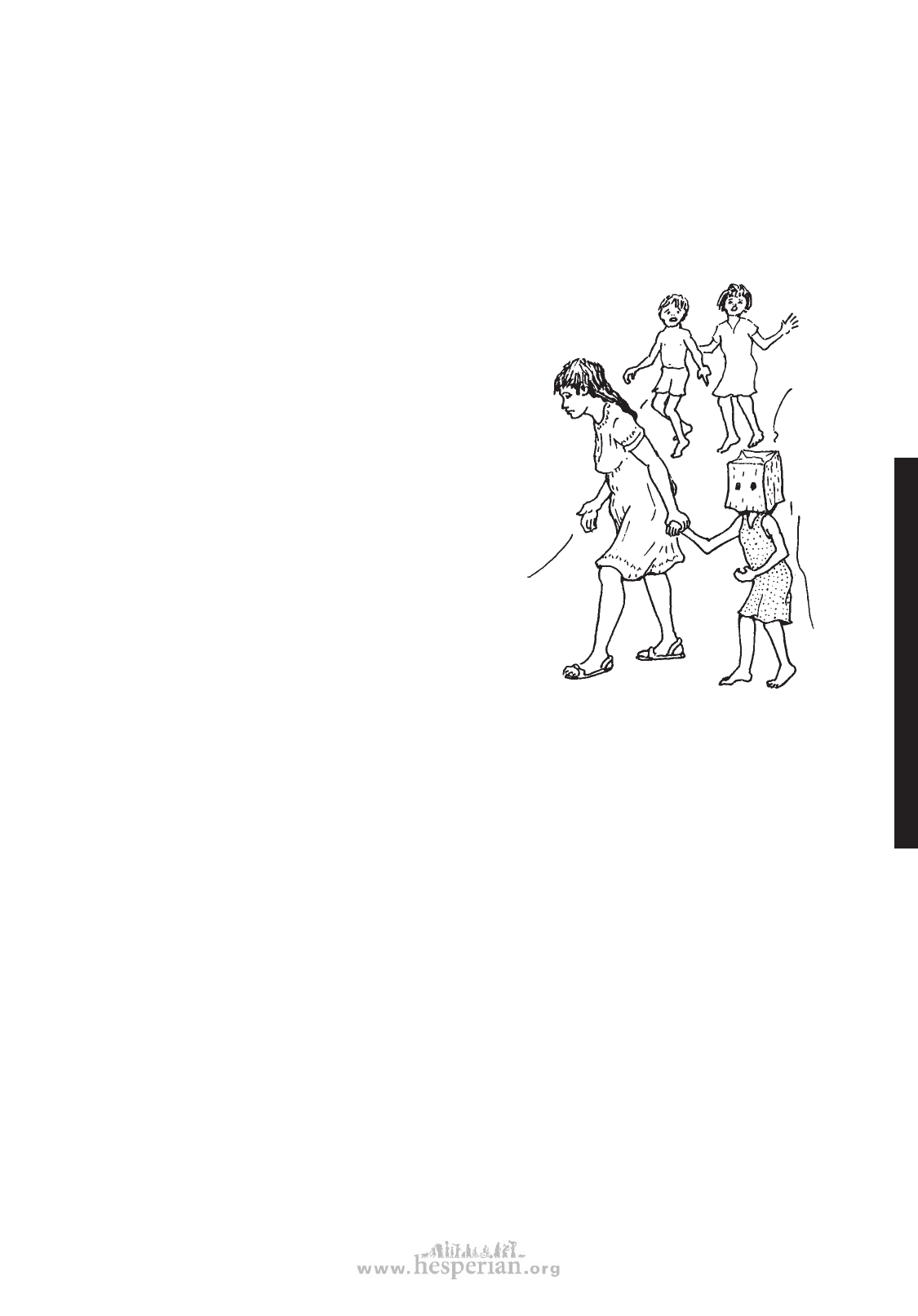
Overprotection
INTRODUCTION TO PART 2 403
Certainly not all disabled children are neglected or treated cruelly. In Latin America
(where this book was written) a disabled child is often treated by the family with an
enormous amount of love and concern. It is common for parents to spend their last
peso trying to cure their child, or to buy her vitamins or sweets, even at the cost of
hardship for the other children.
Providing too much protection is one of the
biggest problems in Latin America and elsewhere.
The family does almost everything for the child,
and so holds her back from developing skills and
learning to care for herself. Even a child with a
fairly mild disability is often not allowed to play
with other children or go to school because her
parents fear she will be teased, or unable to do as
well as the others.
Even in Latin America, where families
usually provide loving care for their disabled
children, they often keep them hidden away.
Seldom do you see a disabled child playing
in the streets, helping in the marketplace, or
working in the fields. Partly because disabled
persons are given so little chance to take part
in the life of the community, everyone assumes
that they cannot—and should not. Disabled
children often grow up as outsiders in their own
village or neighborhood. They are unable to work,
unable to marry and have children, unable even
to move about and relate freely to others in the
community. This is not because their disabilities
prevent them, but because society makes it so
difficult.
In one Latin American border town,
a mother brought her child to a
clinic with her head covered by a
paper bag—to hide a deformity of
her mouth (cleft lip).
Yet things do not have to be like this. In the village of Ajoya, Mexico, people used to stare
at, turn their backs on, or express their sorrow for the occasional disabled child whom
they saw. But now things have changed. Ajoya has become the base of a community
rehabilitation program (PROJIMO) run mainly by disabled young people.
In Ajoya, disabled children and their parents are now comfortable about being seen
in public. Non-disabled and disabled children play together in a ‘playground for all’ built
by the village children with their parents’ help. The community has helped build special
paths and ramps so wheelchair riders can get to the stores, to the village square, in
and out of some homes, and to the outdoor movie on Saturday nights.
Mari, a young woman who is paraplegic (paralyzed from the waist down), first came
to Ajoya from a neighboring village for rehabilitation. She soon became interested in
the village program and decided to stay and become a worker. Today Mari keeps the
records, helps interview and advise disabled children and their families, and is learning
how to make plastic leg braces. She has become one of the most important members
of the PROJIMO team.
disabled village children